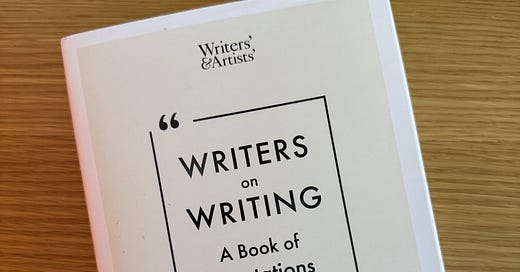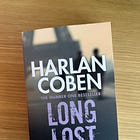Behind the Substack with Karen Smiley
Read the full interview with the author of 6 'P's in AI Pods, as well as Agile Analytics and Beyond.
Welcome to the edition of Behind the Substack. Today,
from 6 'P's in AI Pods and Agile Analytics and Beyond shares her approach to creativity, growing her readership, staying organised, favourite books, and self-care habits. If you enjoy this series, please let me know by leaving like, comment or subscribe for more conversations like this.1. What’s your favourite coffee?
I was gifted some Costa Rican coffee recently and really enjoyed it. Most days, my preferred hot beverage for breaks is decaffeinated green tea with lemon and stevia. Hot cocoa with ginger is a nice treat on super-cold days or the holidays!
2. Can you tell me about the moment you decided to start writing? Where were you and what inspired you?
Over the last few decades, I wrote dozens of research papers and conference presentations. And a few of my colleagues had published their own books. So writing a book had been in the back of my mind for a while.
The big moment for me came in September 2023. I had prepared and delivered some high-level presentations on AI for the Executive Leadership Team at my former employer. They gave me some amazing feedback, to the effect of “wow, thank you, now I finally understand what all of the AI fuss is about”. And it hit me that if what was out there already wasn’t clicking with my ELT, they probably weren’t the only leaders who felt like all this AI noise was whizzing by & not making sense. If I could write about AI in a book with a similar style to my presentations, to make it clear and show relevance to business needs, that would be a good service I could offer to the world. I looked around and haven’t yet seen books that cover what I have in mind. So I started outlining a book on AI – actually, a set of 3 books 😊
3. In what ways has your writing evolved since you started your Substack newsletter?
I’ve been working to make my writing simpler and easier to read. When I first started with Substack in February, I found some great advice about how to write better. Lots of excellent tips about things like short vs. long posts (that came from Russell Nohelty), on writing engaging headlines (from Kristina God), and so many more. I’m a career-long data geek, so of course I started thinking about how data could help me. I looked into measuring my post sizes, then how to measure readability. I found some tools to evaluate and began using them. I’ve been writing about this journey in my newsletter.
My 3 AI books are still evolving in the background, not on Substack yet. I feel like what I’m doing now is “sharpening my saw” – becoming a better writer – so that my books will be better too. After just 4 months, my data was already telling me that my writing has become more readable. And I got an unsolicited comment from one of my former colleagues outside the US that my writing is getting better. That reassures me that paying attention to my readability is worth it.
4. What strategies or efforts have been the most successful in growing your readership on Substack?
Hmm. That’s hard to say, because my publications aren’t exactly huge yet. I see a lot of focus on subscriber count milestones. Of course I’d love to hit 200, 500, 1000, and higher levels someday. But I’m trying not to obsess about my counts. Mostly I want to spend my energy refining my ‘voice’ and writing well about things that I care about, things I think other people may also care about. So far, I’m seeing slow, but pretty steady, growth in my subscriber counts. My open rates are in the high 30’s to 40’s, and so far I’ve only lost 2 subscribers. I’m hoping this data means that I’m connecting with the right people, and that more will discover me and join my community over time.
5. Can you share an example of something you tried that worked better than expected?
The best example I can think of is being proactive about searching for people to subscribe to. I found a few people writing about AI, subscribed, looked at who they were reading, picked some, subscribed … rinse and repeat. It has been a joy to see so many subscribe back!
6. Since you’ve started your publication, what do you consider your biggest success so far?
Having people follow me here from LinkedIn, seeing some of them set up their own Substacks, and having a few write 6P guest articles 😊
And getting kind, positive feedback from some people. Every heart or comment or restack or tip helps me feel like I’m on the right track, and should keep going!
7. Can you walk us through how you plan and organize your content for your Substack publication?
I’m a planner – and a re-planner 😊 So I plan and I allow myself some latitude in changing my plan when things change. This is especially true in the world of AI; new events and stories break every day!
6 ‘P’s in AI Pods is where deep dives on AI and data go. I have outlines and partial drafts for the 3 practical AI books, and a publication plan for an 8-part series of articles on ethics of generative AI for music. I created drafts for each of the 8 parts in the Substack drafts section when I made the plan in mid-March. The book mini-chapters are simmering on a back burner, in offline drafts on my laptop. The next planned posts are on genAI ethics for music.
I leave room in my monthly work plan for pop-up topics in AI that aren’t related only to music or to my 3 books. Some examples.1
If reception is good, and it is so far, the interview series will be ongoing. Once the music series is done (and maybe before), I’m going to start rolling out the mini-chapters on the 3 AI books. I want to learn more about how other people are using Substack for sharing draft book content before I start pushing those out, though.
My main personal newsletter is currently titled “Agile Analytics and Beyond”. It’s for everything that gets me fired up. High level posts on AI go here, and I link to 6 ‘P’s in AI Pods posts for the deeper analyses. My monthly plan allows a few short posts and long articles each month, and keeps the topics open.2
I do a monthly retrospective on how my writing journey is going. I publish it early each month (example: July 3). If my retro needs deeper data analysis that I think might not appeal to agile-minded readers who aren’t data geeks like me, I spin that off into a separate post. Those retros are in my main newsletter.
I’m using a reinvention framework called STELLAR that clicked with me right away as a good way to plan my goals and track my progress. I wrote about it in early March. I post my plan for the next month, for all of my publications. Each retro shares how I did against my plan and goals, and I adjust as needed. My friend & agile coach Catherine Louis has been a great supporter and keeps me accountable!
8. What tools or methods do you use to stay on top of your writing schedule?
My main publication has a page on the ‘ethical shoestring’ tools I’ve chosen to use 😊. I use Trello for managing my non-writing tasks. For planning, I use data to track my planned posts, dates, their sizes, and readability scores. It’s nothing fancy – just an Excel workbook. I am also using my data to help me estimate better.
9. On average, how much time do you spend working on your Substack each day or week?
My daily time investment varies quite a bit – some days zero, some days 10-12 hours! Most months so far, I aim for 30-40 hours per week of writing and research. That’s not counting reading time 😊 or time for Notes, or comments, or publication administration, like when I set up Stripe and Buy Me A Tea last month. As my husband says, I’m still working as hard this year as a full-time writer as I ever did in corporate life!
10. How do you juggle your Substack with other commitments in your life?
One thing I love about being a full-time writer is that my work schedule is fully my own to control. If I need time to help take care of my mom, or for my own appointments, or if I need a day ‘off’ to help my husband take care of repair work at the house, I just do it. I can write any time, anywhere that I have my laptop.
11. How do you care for yourself?
I let myself stay in flow whenever I can, and I take breaks when I need to! The most important thing I’ve learned and started doing, though, is to recalibrate my expectations of myself.
I worked for decades in software for corporate. I built a reputation for being reliable and a mindset that I “do whatever it takes” to hit a target I committed - often, even if that target no longer makes sense. It was stressful and demoralizing to be pushed to do this, though.
When I moved into leadership, I worked to protect my teams’ health and morale and take that pressure off them. As a director, I could say ok, business needs have changed and that goal doesn’t make sense any more; or, here’s a good reason why the plan should change and we should do X instead of Y.
It didn’t always work out. And I didn’t always extend the same grace to myself. Now I do. It’s my writing plan, and I only committed it to myself. My plan can change, sometimes it should change, and I won’t sacrifice my health any more to meet a target that is no longer important.
12. What’s a book you’ve read recently that had a big impact on you?
I loved “Always Bring Your Sunglasses” by Becca Lory Hector, just released earlier this year. It’s a beautifully written, open, and compelling memoir by a woman diagnosed as autistic at the age of 36. I have family members and friends who are identified as autistic, and I’ve had many neurodivergent team members. Anecdotally, it’s been reported that neurodivergence is higher among people who work in AI than in the general population – which makes total sense to me. (We still don’t have enough women in AI yet, but women especially tend to be underdiagnosed.) Any chance I find to learn more about how to support my neurodivergent friends and family, I grab.
Many of your readers are probably working with, or sharing part of your life with, a neurodivergent person and don’t know it; if it’s a woman, she may not even know it. This whole book resonated and gave me more than a few “aha!” moments of recognition. It also motivated an unplanned 6P article that came out on July 11 😊.
13. Where are you finding joy when things don’t go to plan?
I go back to simple basics. I connect with friends or family. I read something off-topic of what’s stressing me. I make or listen to music. I take my camera out for a nature walk and look for beautiful or interesting things to photograph. Or I get busy in the yard or flower beds - weeding and pruning are proven therapeutics for me!
14. What are you working on right now?
My main writing focus is the 6P series on ethics of generative AI for music. The ‘wetware’ interviews are less about me writing, more about finding and amplifying voices of people who are over-impacted and under-represented in all of the chatter about AI. My secondary focus is building out the content and outlines for my 3 AI books.
Thank you so much, Karen Smiley, for sharing your stories with us! What are two things that stood out to you or that you’re taking away from this interview?
If you enjoyed the interview with Karen, you might also enjoy this one with Daria Diaz:
As always, thank you for reading! If you enjoy this series, please let me know by leaving like, comment or subscribe for more conversations like this.
when the UN passed its resolution on AI
the uproar when all of the major LLMs were making infamous, glaring mistakes, like Google’s AI telling people to put glue in their pizza
for Pride Month, when I worked with a guest author on a post about how AI biases can hurt LGBTQIA+ people.
In March, I wrote about ageism and what we can do about it.
In April, I wrote about my lifelong love for photography and how my cameras help me “see” and think.
In May, I wrote about a lesson learned from playing disc golf for the first time.
During June, I wrote a few articles reporting on my research into free tools that give me data on how readable my writing is.
In July, I wrote about how equal rights aren’t pie and what we can all do to help fix systemic biases.







